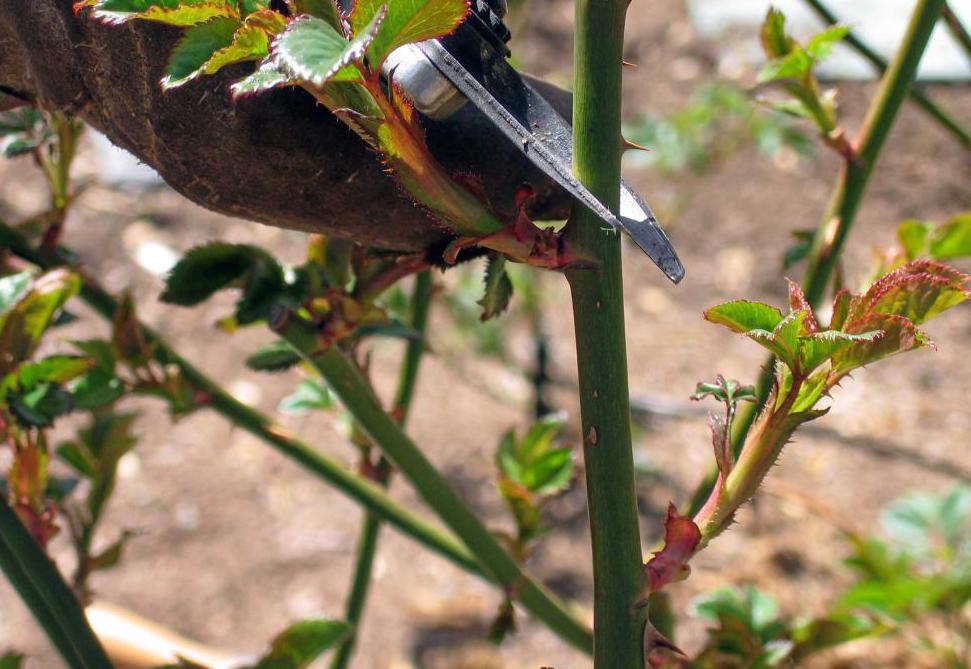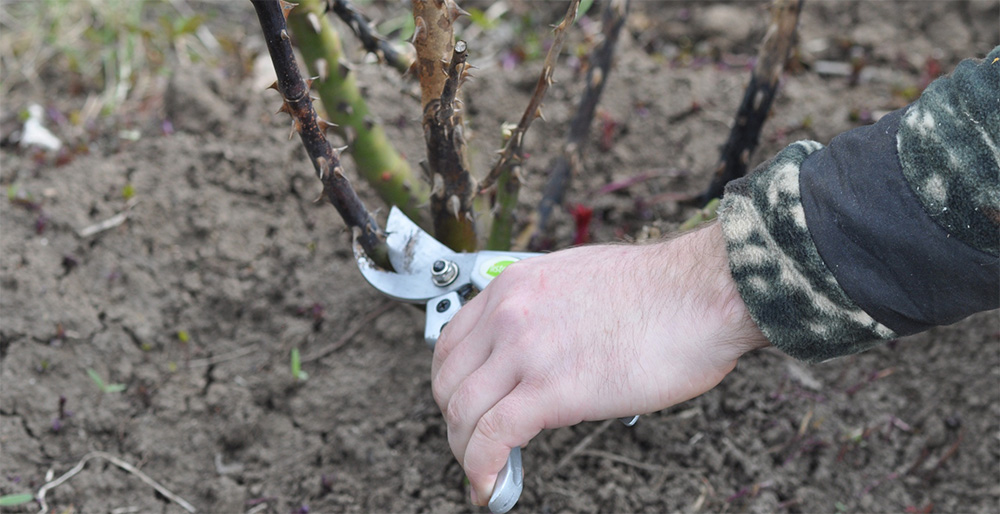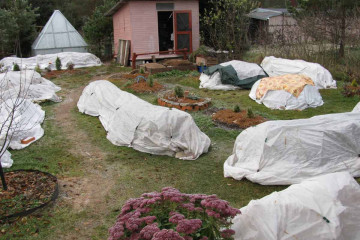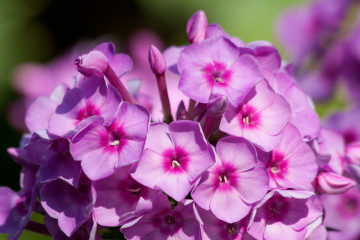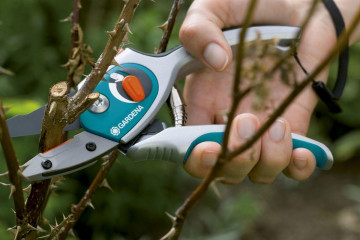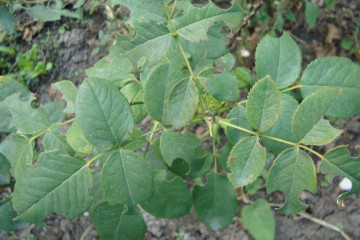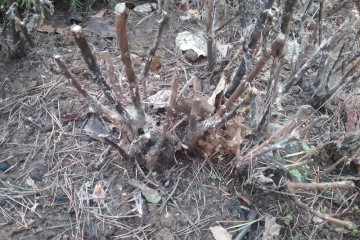How to prune roses for the winter - when is it better to do it
Content:
Florists estimate the complexity of caring for roses differently. But everyone agrees that certain procedures cannot be dispensed with, otherwise the plants will not give young healthy shoots and bloom. These include autumn pruning. It helps the different varieties to cope with the winter period without loss. Novice gardeners need to figure out how to prune roses for the winter.
Pruning roses for the winter - is it necessary to do it
There are several factors that explain the fall pruning required:
- From frost, cracks appear on the shoots, filled with ice. This makes it easier for bacteria and viruses to enter. With the onset of heat, damaged plants recover with difficulty and do not bloom well. Infections provoke diseases, so that all the forces of the bushes go to fight them.
- Pruning roses in autumn encourages bud-setting. In some varieties, flowers appear only on the shoots of the current season, in others - in the second year. This influences the choice of the "haircut" method.
- The bush should not be too thick, otherwise there is a risk of fungal infection. They multiply rapidly in the shade, spreading to neighboring plants.
What types of roses do not need to be pruned for the winter
Varieties that bloom only once during the growing season do not require pruning before wintering. They are able to withstand severe cold, do not require shelter. They do not need to be bent to the ground.
Don't prune in autumn:
- spray (park) roses;
- hybrid varieties;
- ground cover species;
- Canadian roses.
When to start trimming by region
Time for cutting shoots is planned so that the wounds have time to dry out before winter, and pathogenic microorganisms do not penetrate them. In different regions, depending on climatic characteristics, their terms:
- southern regions - from October to November;
- The middle band is in September;
- northern regions - immediately after flowering, as a rule, already in August.
Regardless of the place of cultivation, events must be carried out before frost appears to prevent freezing of fluids in the tissues.
The timing of pruning is also influenced by the varietal belonging of the bushes. The most fragile are yellow roses. Whites are distinguished by an average degree of frost resistance, and red ones withstand cold weather better than others. Therefore, if there are a large number of varieties in the garden, the bushes with yellow flowers should be cut first, then you can move on to white ones.
The main principles of pruning
It is necessary to prune both adult plants and young bushes planted in the spring months.
Circumcision tools
The procedure requires a sharp secateurs. It should be disinfected.
After each bush, it is also worth treating with an antiseptic in order to exclude the transmission of diseases.
Preparing for the procedure
Before "cutting" the foliage and all small shoots are removed so that they do not thicken the bushes. Then they get rid of dried, damaged, and young unripe stems.The latter are reddish in color, they cannot survive the winter and often become a source of spread of the fungus. In addition, old branches of 4-5 years old are removed.
Slicing rules
It is necessary to shorten the shoots correctly. It is important to make an oblique cut. This prevents moisture build-up. It should be performed 5-10 mm above the kidney. She should look outward so that in the spring the young branch does not go into the inside of the bush.
In order for the plant to become lush, spreading next year, the stems must be cut off above those buds that are located on the outer sides. To get an upright bush, on the contrary, cutting should be carried out on the buds located on the inner sides.
The choice of the pruning site depends on the age of the rose:
- Instances of the first year are shortened by half. During the next growing season, each branch produces 2-3 young shoots that grow from the root collar. You cannot cut them under a stump, since they provide a long plant life and abundant flowering.
- Bushes of the second year of life are trimmed 2-3 eyes from the base.
- Three-year-old and older specimens get rid of damaged, dead, weak stems and short shoots formed during the past season. Lush flowering is facilitated by cutting the side branches directed towards the central part of the bush.
Features of pruning for each variety of roses
Each variety requires a different approach to pruning. Knowing these features helps to achieve a large number of buds in the next season.
Pruning standard roses in the fall
All standard species can suffer from over-pruning in winter. They are threatened with freezing. In the autumn months, all flowers are removed from the trees. Further, the haircut is carried out depending on which variety is grafted onto the stem.
Pruning climbing roses for the winter
When clipping climbing roses before wintering, they are guided by their type:
- On tall bushes, reaching 2 meters, with large flowers, the stems are cut by a third. In this case, the plants can do without the procedure. You can bend the branches to the ground and then cover.
- Miniature specimens with small flowers are not shortened. It is enough to pinch the growth point.
Autumn pruning of hybrid tea roses
After a warm summer and good growth of the shoots, hybrid tea varieties are shortened by ½ or slightly lower. This allows you to prepare the plants for wintering, prevent them from freezing. In addition, it becomes easier to build shelter for cut bushes.
Pruning floribunda roses for the winter
The degree of pruning of floribunda roses determines the height and spreading of the plants in the next year:
- When the stems are cut close to the surface of the soil, the bushes become stunted, but lush, many buds bloom on them.
- If a light haircut is carried out, then with the onset of spring and summer, the plants are tall, but not spreading. Flowers mostly bloom at the crown.
Autumn pruning of polyanthus roses
Polyanthus roses are not cut in autumn, but in spring. During this period, all parts of the plants damaged by frost are removed. The branches are shortened by 1/3 of the length so that the center of the bush remains free.
Caring for bushes after pruning
Autumn work on the care of rose bushes is not limited to pruning. They include:
- the introduction of phosphorus-potassium fertilizers, which help the shoots to ripen;
- removal of wilted flowers;
- pinching young shoots;
- burning or adding to the compost the green mass left after cutting the plants;
- processing of cuts with garden varnish or specialized paste;
- removal of leaves before the construction of a shelter, preventing the appearance of rot.
Rose is one of the most beautiful garden plants. In order to help her adequately withstand the tests of frost in winter, it is important to properly cut her shoots, as well as carry out other autumn care activities.
